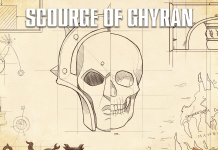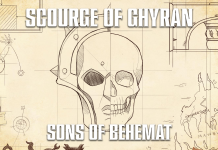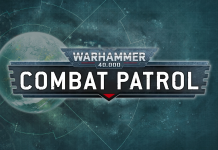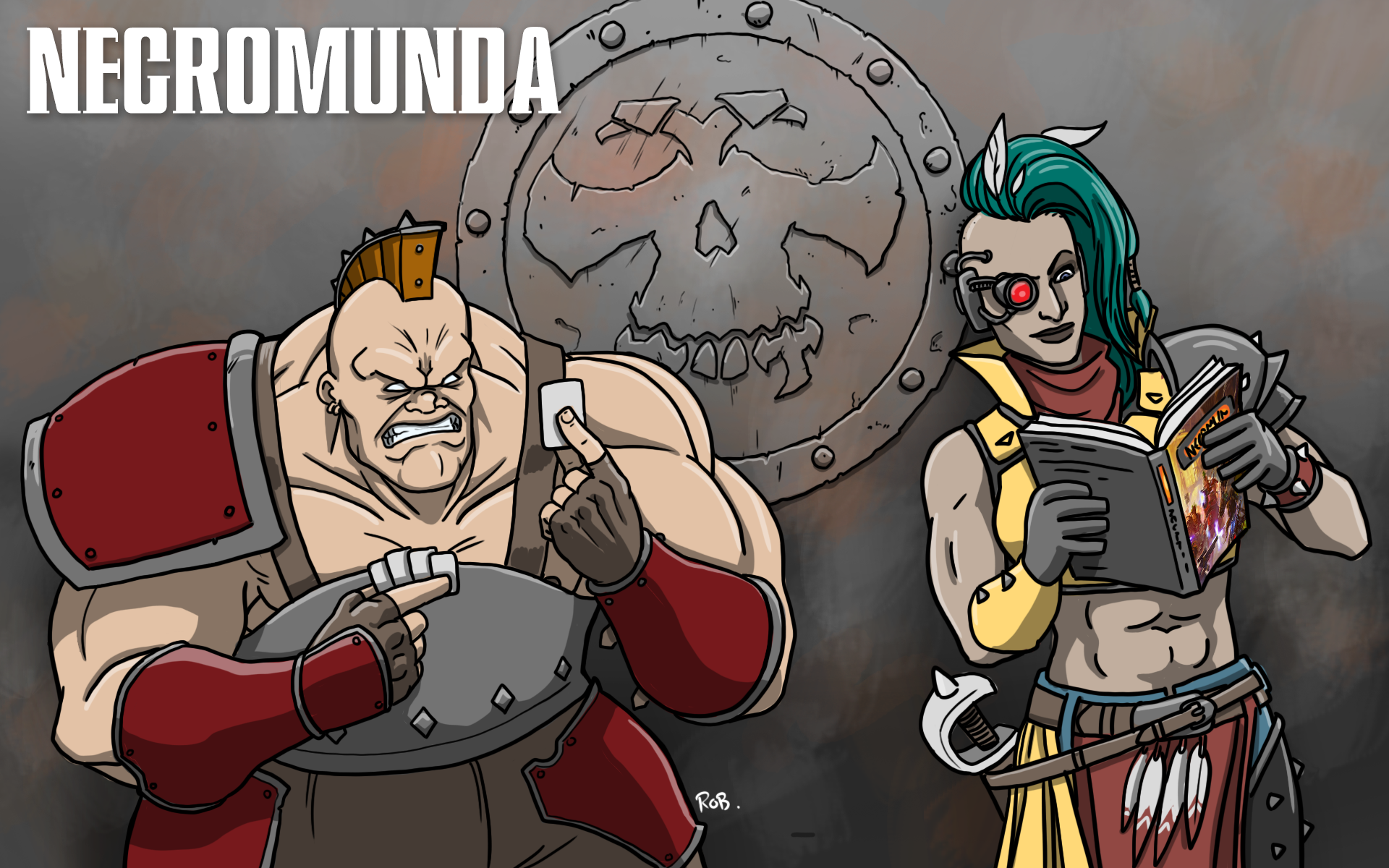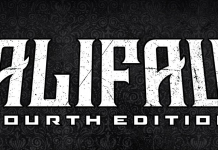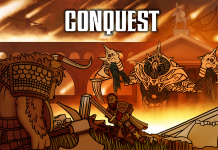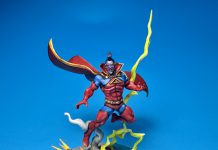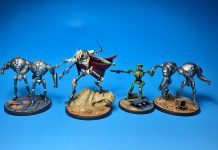A number of years ago at AdeptiCon we ran a Sharp Practice game with a half-dozen hobbyists painting units and bringing them to play. We put a ton of work into it and it came out great. I’ve been sitting on this battle report for a bit and wanted to share!

We ended up with six players, four who had painted something and two who were filling in and playing (and having a good time!). Dick painted ~20 French grenadiers, Thad painted ~13 Native Americans, I painted ~30 Provincials and 13 Native Americans, and Geoff painted ~17 British regulars and 14 colonial rangers.

We played a scenario I wrote specifically for this event – an asymmetrical scenario that Geoff cooked up with his own knowledge of the period.

It was hard to play in the pick-up game area as it was extremely loud, with 40k players right next to us shouting about Grey Knights and special rules and yelling at each other, plus all the other con traffic and etcetera. I think four players is probably the best if you’re learning; with more players it bogged down a bit with activations. It might help as well to have an expert on each side, or obviously a GM who can help everyone.

Each player also received a playsheet with their units, commander, and a quick reference on the back. I used these for my ACW game earlier this year and I think they work really well. They worked especially nicely for our light infantry, since they have five or six special rules.

Thad painted up some Wargames Factory Native Americans and they came out great! I was especially impressed by the colors he used.

My own natives are on the bottom – including a certain Hawkeye.
Here you can see the Virginia Regiment in all its glory and Geoff’s regulars. He painted them as the 60th Foot, who certainly saw more action than the provincials did.

Dick’s grenadiers came out splendid. He also painted a deployment point that isn’t shown here, with some chopped logs etc. The monk and mule train behind I painted for this game as well.
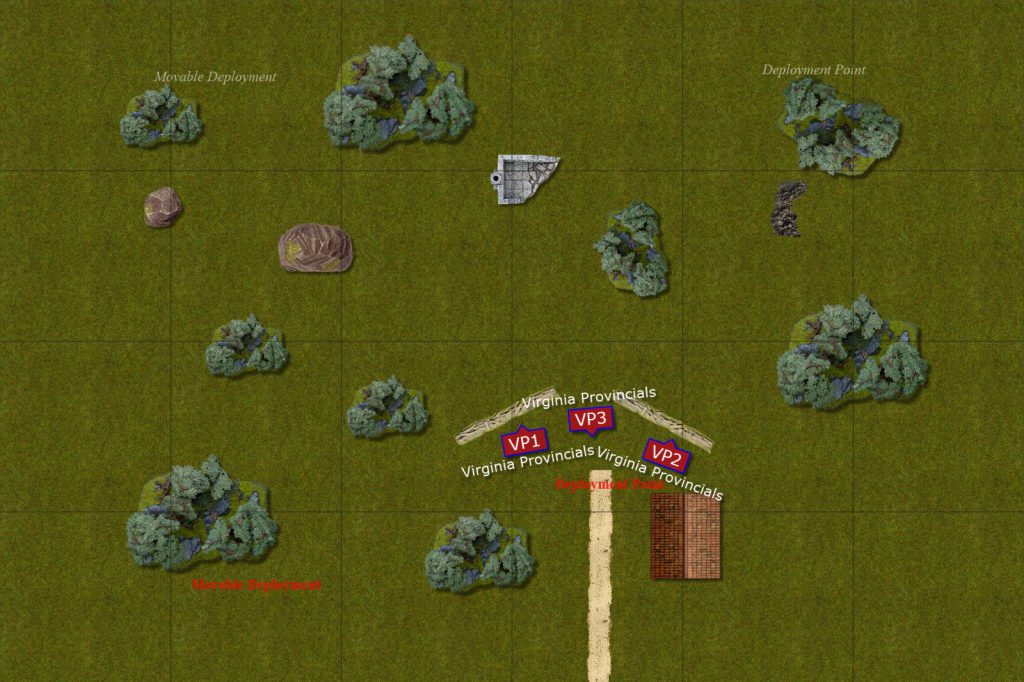
I made some maps up of what I can recall. The provincials started on the board in disarray after hearing gunshots in the distance while chopping wood, clearing a road.
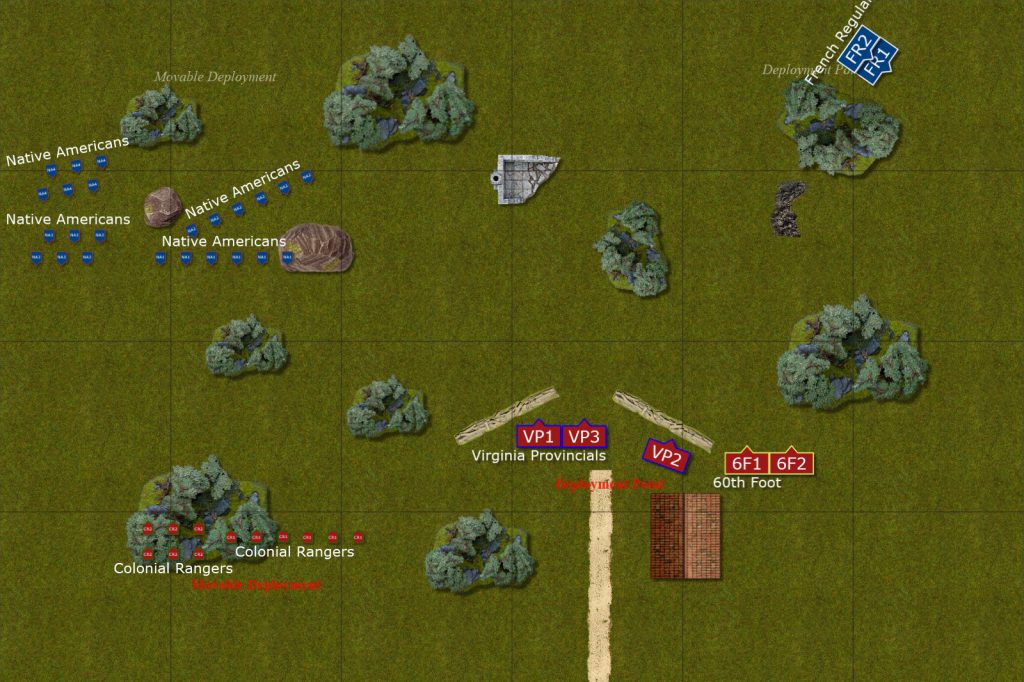
As soon as he could, the provincial captain attempted to marshal his forces, while every unit came on the board before the first tiffin was drawn. French regulars came on at their static deployment point, the Native Americans spread out on their right flank, and the rangers took up the British movable deployment point.

In these photos the Native Americans move up the flank while the crown forces form up on the field.

The provincial captain wasn’t sure yet what to do with his forces. The British commander told him his detachment could take care of the grenadiers, so the provincials wheeled to face the oncoming natives.
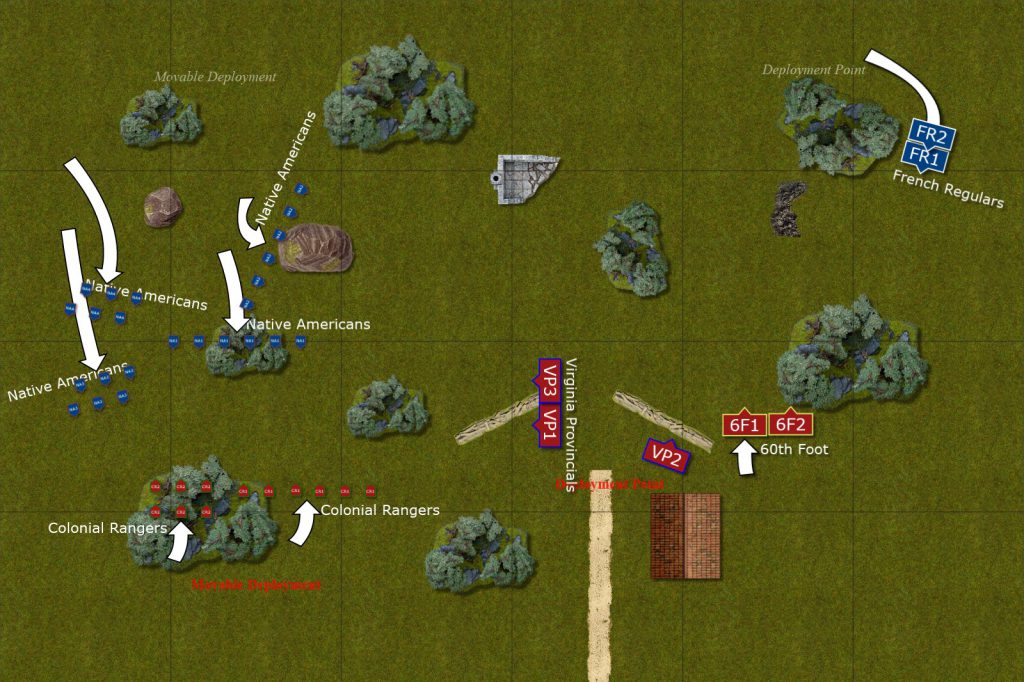
The rangers moved up and poured the first volley into the oncoming natives, felling a few. They knew they would have to hold off the natives while the other forces were formed up.

Here you can see the effects of several volleys from both sides – the natives were treated as Light Infantry, not Tribes. They did not have first fire, however.
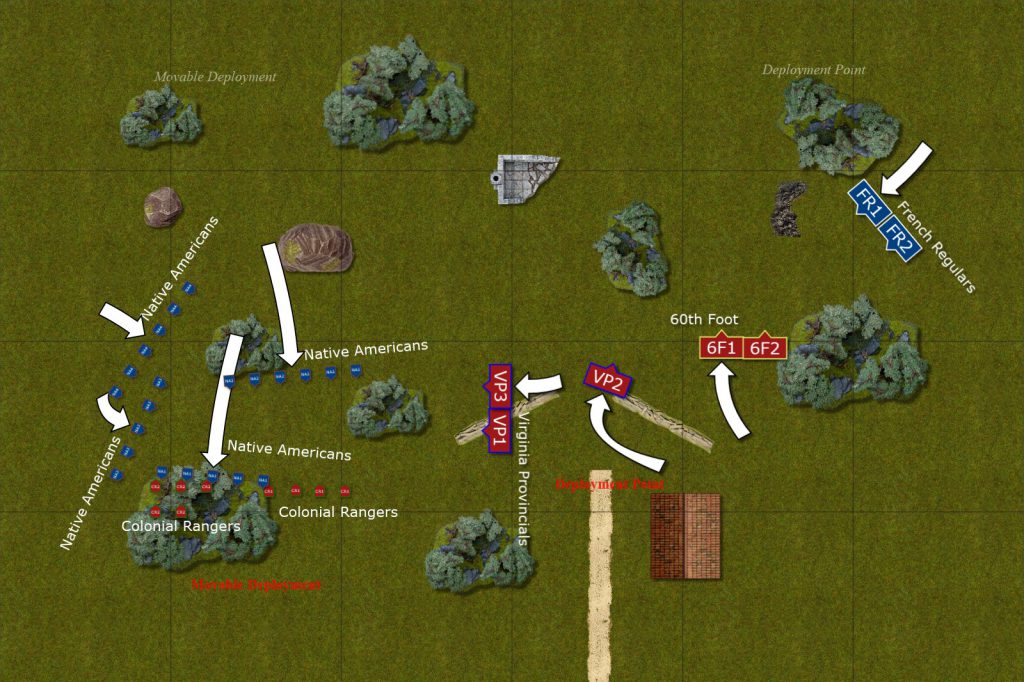
The natives actually charged into fisticuffs with the rangers at one point and absolutely destroyed them, but were forced to fall back due to larger number of casualties. They actually killed the colonial ranger sergeant in hand to hand, taking his scalp for the chief.

The Crown forces move up on the grenadiers while the provincials steel themselves for the oncoming natives.
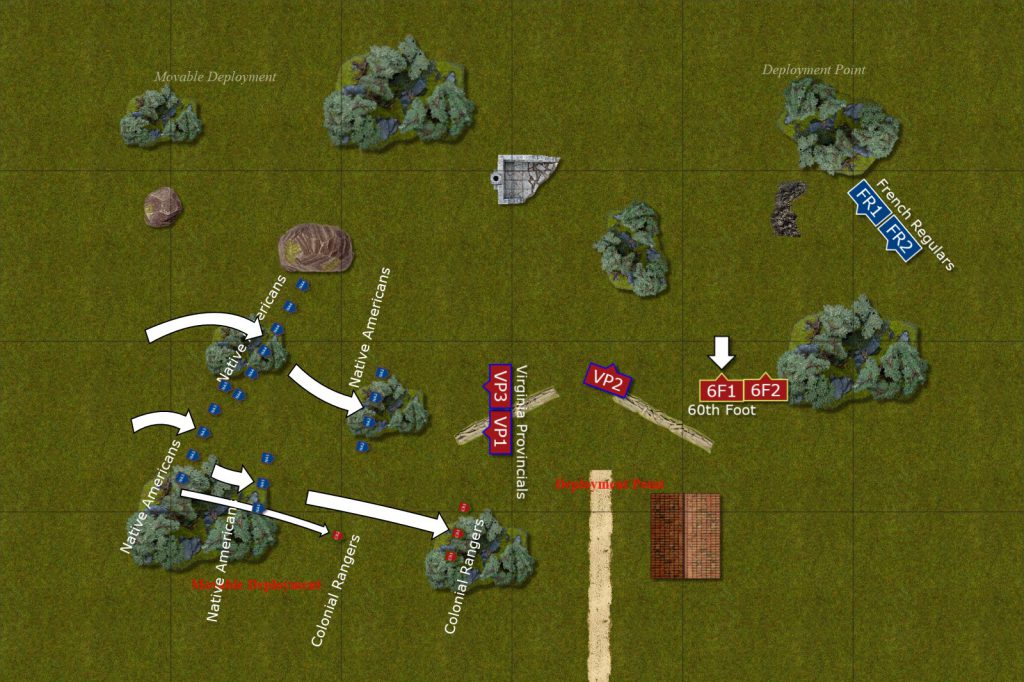
Geoff’s regulars had moved up the board, but as soon as they presented a target, Dick’s grenadiers used a crashing volley to put something like six shock on each group. They were forced back so they would not take more shock. The natives continued crashing the British left flank. The provincial captain hoped that his men could stand the onslaught. At this point the morale was something like French = 9, British = 6.
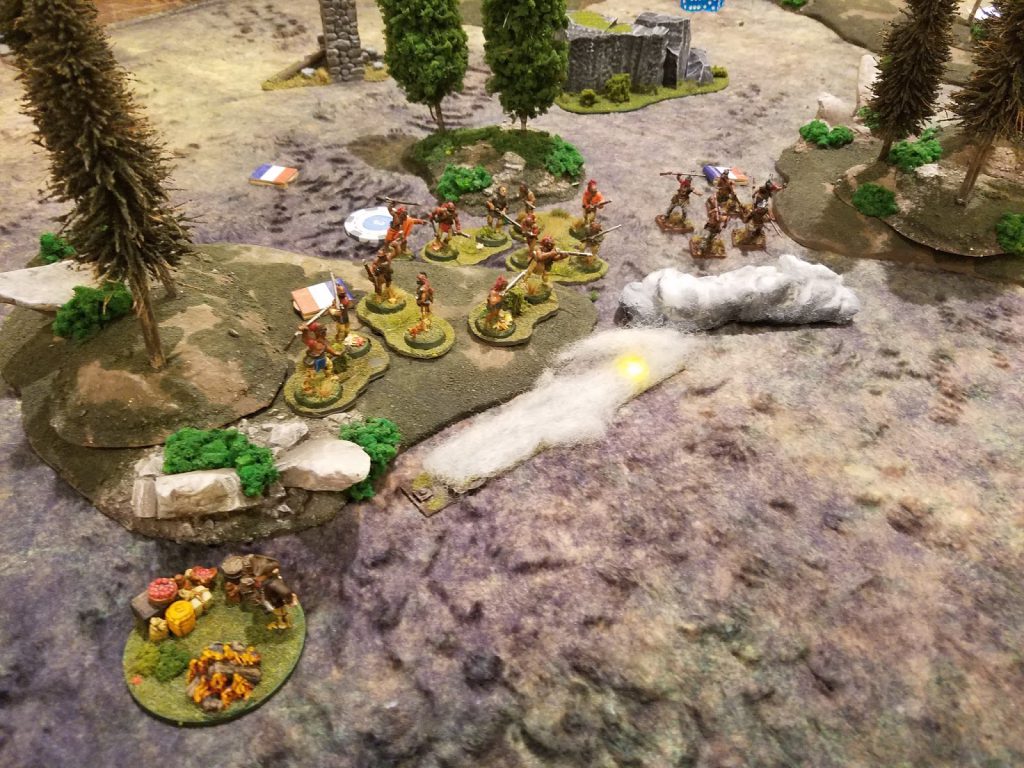
The natives poured fire into the retreating rangers, all but eliminating them. The provincials actually moved a detachment up to cover the retreating regulars and did put some fire on the grenadiers, however ineffectual it was.

Captain Monroe fronted his provincials and ordered them to present for a volley. Would it be fast enough?
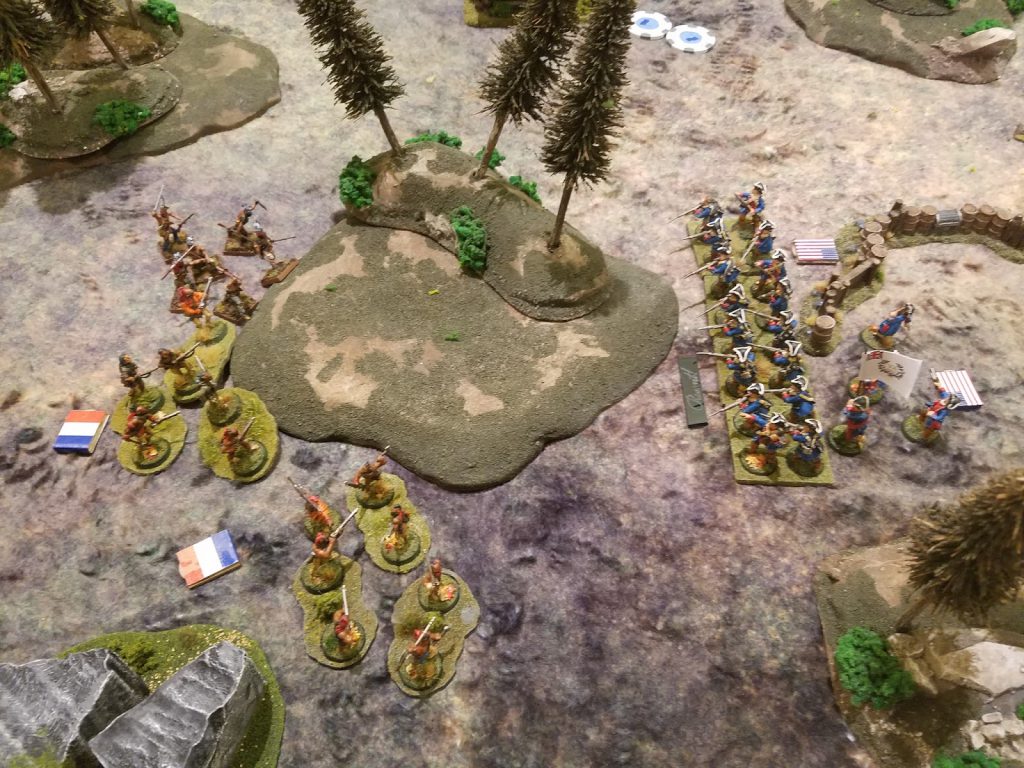
It wasn’t enough – the first chit drawn at the next turn was for the Native Americans, and they crashed into the provincial line screaming war yells and chopping with tomahawks left and right. The utterly defeated Crown forces set up a rear guard as best they could to attempt to keep the skirmish from becoming a slaughter.

The game played out, in our minds, very much like a real battle in the FIW could have. The Native Americans used superior mobility and melee ferocity to defeat Crown forces that weren’t ready for it. Perhaps if the provincials would have been allowed to hold the left flank, they could have lots of shots into the natives, but they are weedy coves in melee – not very good at all.
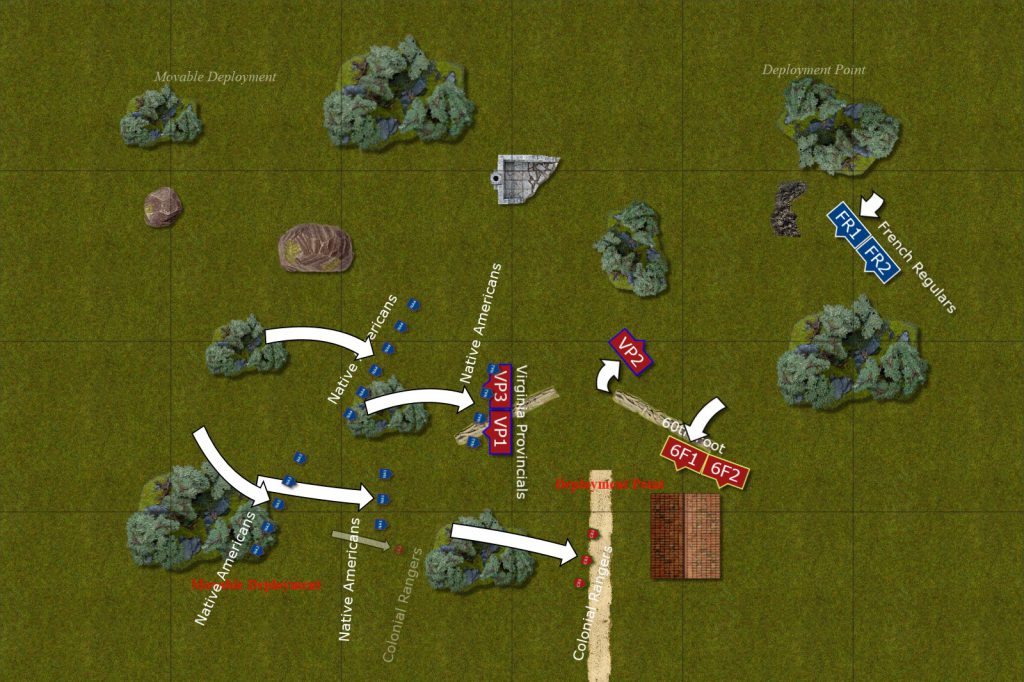
Probably the biggest letdown was the 60th Foot. They took a ton of shock initially and just weren’t in the game for the rest of it. Perhaps the provincial captain could have detached to help rally shock? Who knows. It was a great, fun game and I think everyone learned a thing or two about how to play Sharp Practice.
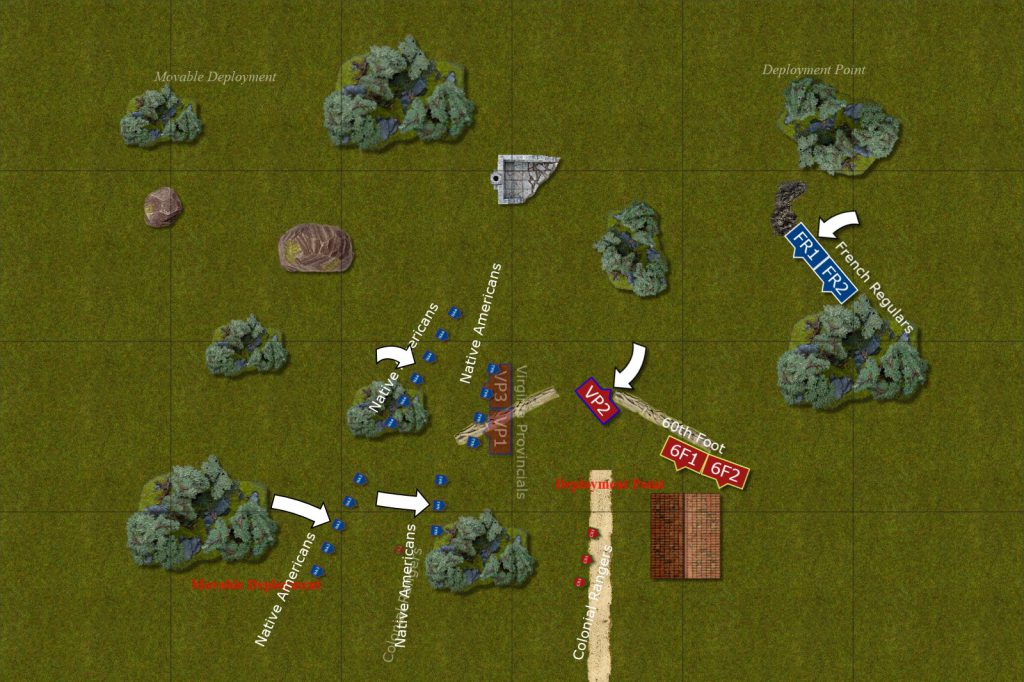
One of the best parts was hearing people walk by marveling at the game – some actually knew what SP is. Which isn’t to say its bad or anything, just that this is a predominantly 40k convention, but all these people are attending to do something here and knew what SP is. It shows the community is growing!
Have any questions or feedback? Drop us a note in the comments below or email us at contact@goonhammer.com. Want articles like this linked in your inbox every Monday morning? Sign up for our newsletter. And don’t forget that you can support us on Patreon for backer rewards like early video content, Administratum access, an ad-free experience on our website and more.

